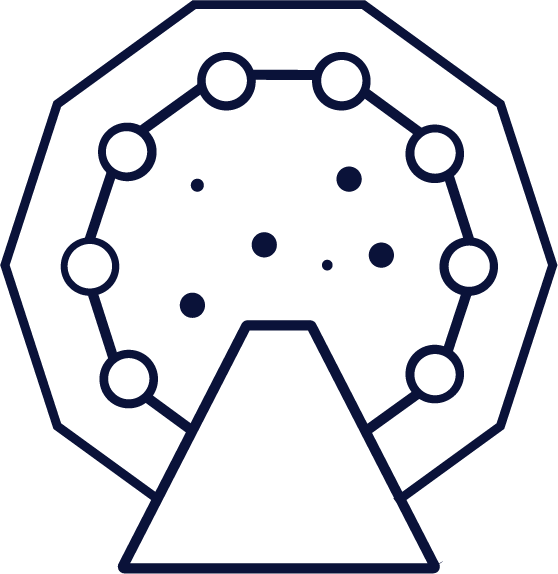project
01.
02.
03.
04.
01.
starmask
Kickstart your trip of the Move ecosystem. Explore Web 3.0 with security.
StarMask is the first browser extension wallet to support multiple chains in the Move ecosystem, including Starcoin and Aptos. Moreover, it easily supports self-created accounts, securely adding and sending tokens in your browser.
With the StarMask, you can:
- Create an account or import from a mnemonic / private key
- Add token and Send token
- Confirm and publish transactions submitted from any Dapps
- Support display of NFT Gallery and NFT Tokens in Aptos networks
- Support major mainnet/testnet/devnet network
- Support signAndSubmitTransaction in Aptos networks
- Support aptos-wallet-adapter
→ Chrome Web Store: Extension Link

Chrome browser extension

Decentralized account system

Open source

02.
THOR PROTOCOL
SiThor implements a Layer 2 protocol for the Bitcoin network on top of the Lightning Network, and users use a high-level programming language (WebAssembly) to implement smart contracts. The user can easily develop and deploy applications through the interface (ABI) defined by the Thor contract. In addition, Thor’s arbitration service is used to solve the contract trust problem.
This project is part of Westar’s exploratory development of blockchain layer 2, which adds smart contract support to the Bitcoin network. We implemented the arbitration service on top of the Lightning Network, combined with its Hash Time Lock (HTLC) mechanism. This enables users’ smart contracts to be decentrally and securely executed. Users create a channel to interactively execute contracts by pledging Token to the arbitration service and sending their evidence (challenging) to the arbitration service in case of disputes, which checks and replays the contracts. This solves the trust and security problem of decentralized applications.
03.
SIRIUS PROTOCOL


Sirius is based on the secure Hub model, which allows any user to join the Hub by simply adding an on-chain top-up to enable secure and fast second-level transfers with other users in the Hub. The Hub contract is a good way to monitor the owner to prevent cheating, and it also acts as an arbiter to handle disagreements between users and users, and between users and owners. In addition, users can easily withdraw and exit the Hub.

Sirius is based on the secure Hub model, which allows any user to join the Hub by simply adding an on-chain top-up to enable secure and fast second-level transfers with other users in the Hub. The Hub contract is a good way to monitor the owner to prevent cheating, and it also acts as an arbiter to handle disagreements between users and users, and between users and owners. In addition, users can easily withdraw and exit the Hub.

Sirius is based on the secure Hub model, which allows any user to join the Hub by simply adding an on-chain top-up to enable secure and fast second-level transfers with other users in the Hub. The Hub contract is a good way to monitor the owner to prevent cheating, and it also acts as an arbiter to handle disagreements between users and users, and between users and owners. In addition, users can easily withdraw and exit the Hub.

Sirius has a one-layer-based, proven security mechanism. First, Sirius is based on the Ethereum ecological layer 2 protocol, within a determined period of time, the owner must upload the layer 2 states of the Hub, and the Hub contract will conduct strict state verification, otherwise, all will lead to the Hub freeze, to ensure that users can successfully retrieve their own token. second, honest users can, at any moment, compare the Proof with the Hub's The Hub uses a delayed-arrival method, so that evil user can find out in time if they steal money by colluding with the owner or submitting expired Proofs.

Sirius is based on the secure Hub model, which allows any user to join the Hub by simply adding an on-chain top-up to enable secure and fast second-level transfers with other users in the Hub. The Hub contract is a good way to monitor the owner to prevent cheating, and it also acts as an arbiter to handle disagreements between users and users, and between users and owners. In addition, users can easily withdraw and exit the Hub.

Sirius implements a two-tier status channel with all the benefits of a stateful channel, enabling timely completion of small payments between users within the Hub without in-chain waiting and in a timely manner while reducing transaction fees and improving throughput.


04.
StarGATE PROTOCOL
STARCOIN
Starcoin is a decentralized, proof-of-work-based blockchain layer system that supports Move contracts, which are designed for digital assets and are secure and scalable, and the state of custom assets and chain native assets and contracts based on Move contracts are a persistent resource, a first-class citizen of the chain, sharing the security of the main chain and ecology, as well as a unified programming interface. The goal of Layer 1 is to decentralize, secure, and provide infrastructure services for the upper layer of blockchain protocols.
STARGATE
Stargate is Starcoin’s Layer 2 protocol implementation, which implements a common state channel with the goal of providing scalability and convenience. The combination of the first and second layers allows for secure and seamless transfer of contract state between the first and second layers and execution of contracts. Resources from any layer can be transferred to the Layer 2 channel, reducing transaction costs and increasing throughput. Since the second layer supports smart contracts, DApps can run directly on the second layer, thus solving the problem that DApps cannot scale due to the throughput of the first layer.
Another improvement of Stargate is the hoisting mechanism of the channel. In this model, users can host their channels to a node, which acts as a proxy for the user in the P2P network on the second layer, monitors the actions of the other side of the channel, and notifies the user to access the network for processing once the user needs to operate. This has no security issues on the one hand, and reduces the maintenance cost of the Layer 2 node on the other hand, as the user does not need to maintain a long-term online Layer 2 node.
The project is under continuous development…

